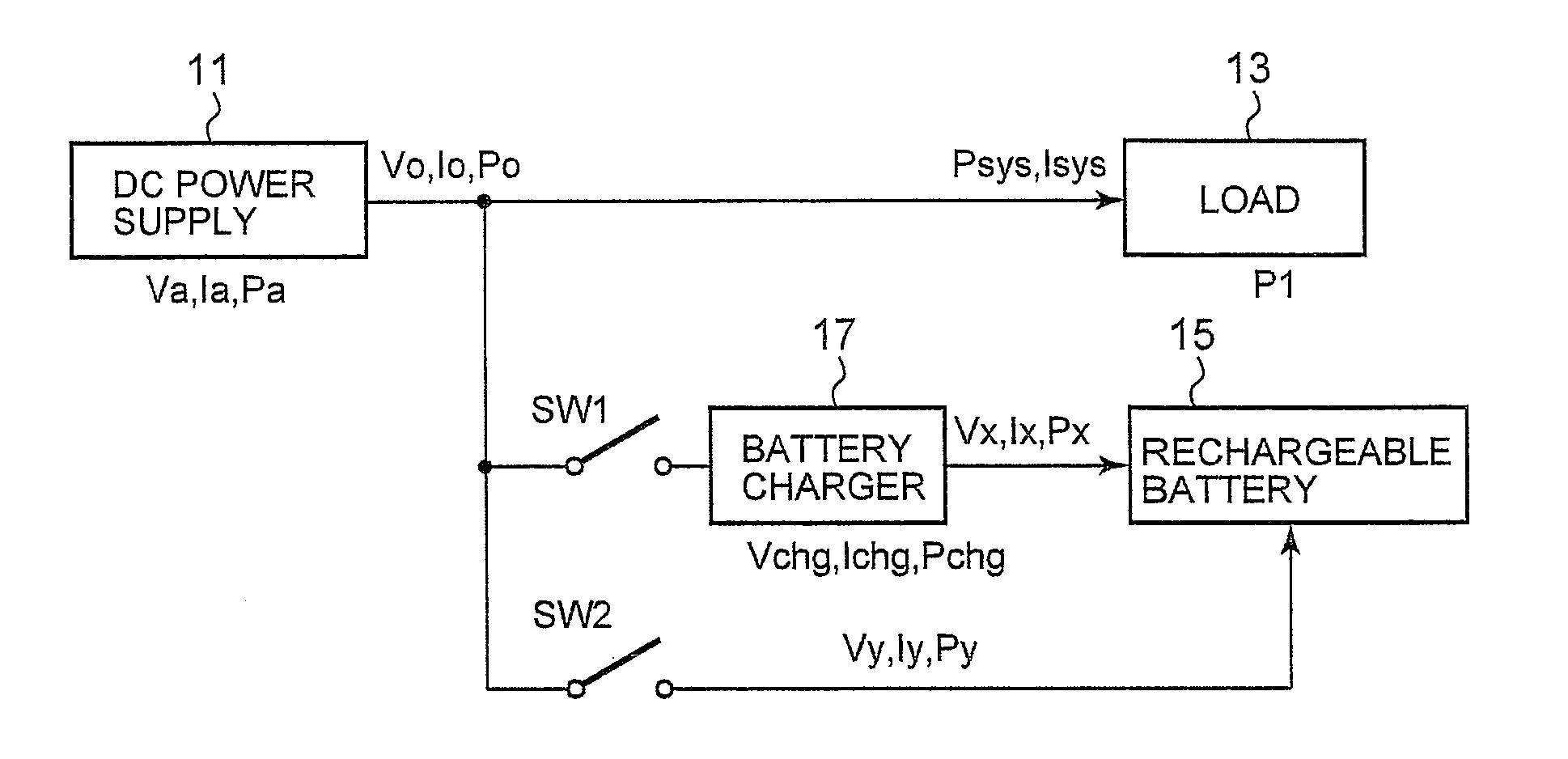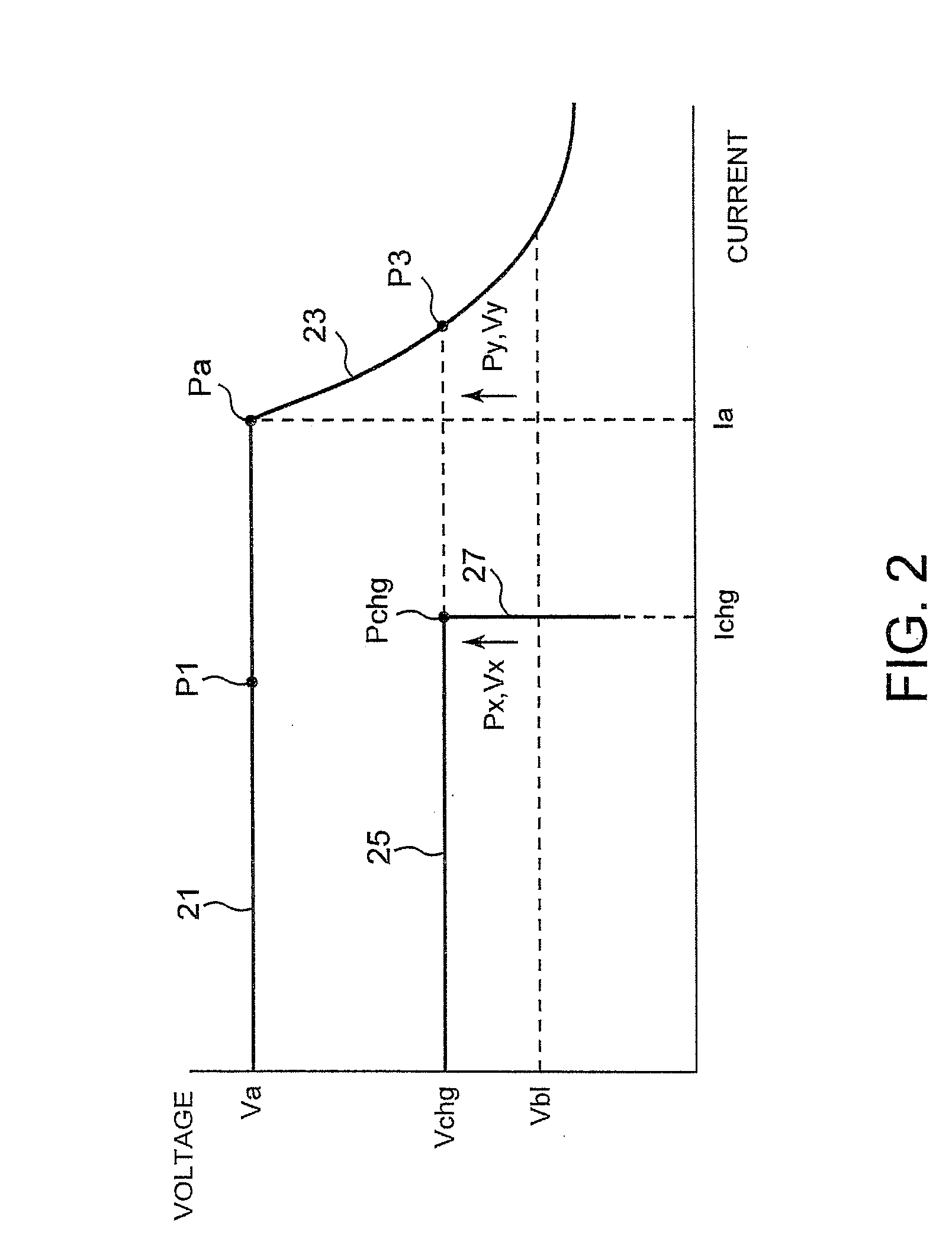Method and Apparatus for Charging Batteries
a battery and charging method technology, applied in the field of battery chargers, can solve the problems of long charging time of inability to perform fast charge type lithium ion rechargeable batteries to its full capacity, and 75 minutes of fast charge type lithium ion rechargeable batteries to be charged to the same capacity
- Summary
- Abstract
- Description
- Claims
- Application Information
AI Technical Summary
Benefits of technology
Problems solved by technology
Method used
Image
Examples
Embodiment Construction
[0016]FIG. 1A is a block diagram illustrating a basic construction of a battery charging system, according to an embodiment of the present invention. The battery charging system has two charging modes: a first charging mode wherein charging is performed by means of a battery charger 17 and a second charging mode wherein charging is performed by means of a DC power supply 11. In FIG. 1A, the DC power supply 11 is a voltage converter that converts an AC voltage or a DC voltage into a predetermined DC voltage. The DC power supply 11 is able to supply electric power to the battery charger 17 by opening a switch SW2 and closing a switch SW1 while supplying electric power to a system load 13. The DC power supply 11 is also able to directly charge the rechargeable battery 15 by opening the switch SW1 and closing the switch SW2 while supplying electric power to the system load 13.
[0017]FIG. 1B is a chart illustrating the voltage-current characteristics of a battery charger 17 and a DC power...
PUM
 Login to View More
Login to View More Abstract
Description
Claims
Application Information
 Login to View More
Login to View More - Generate Ideas
- Intellectual Property
- Life Sciences
- Materials
- Tech Scout
- Unparalleled Data Quality
- Higher Quality Content
- 60% Fewer Hallucinations
Browse by: Latest US Patents, China's latest patents, Technical Efficacy Thesaurus, Application Domain, Technology Topic, Popular Technical Reports.
© 2025 PatSnap. All rights reserved.Legal|Privacy policy|Modern Slavery Act Transparency Statement|Sitemap|About US| Contact US: help@patsnap.com



